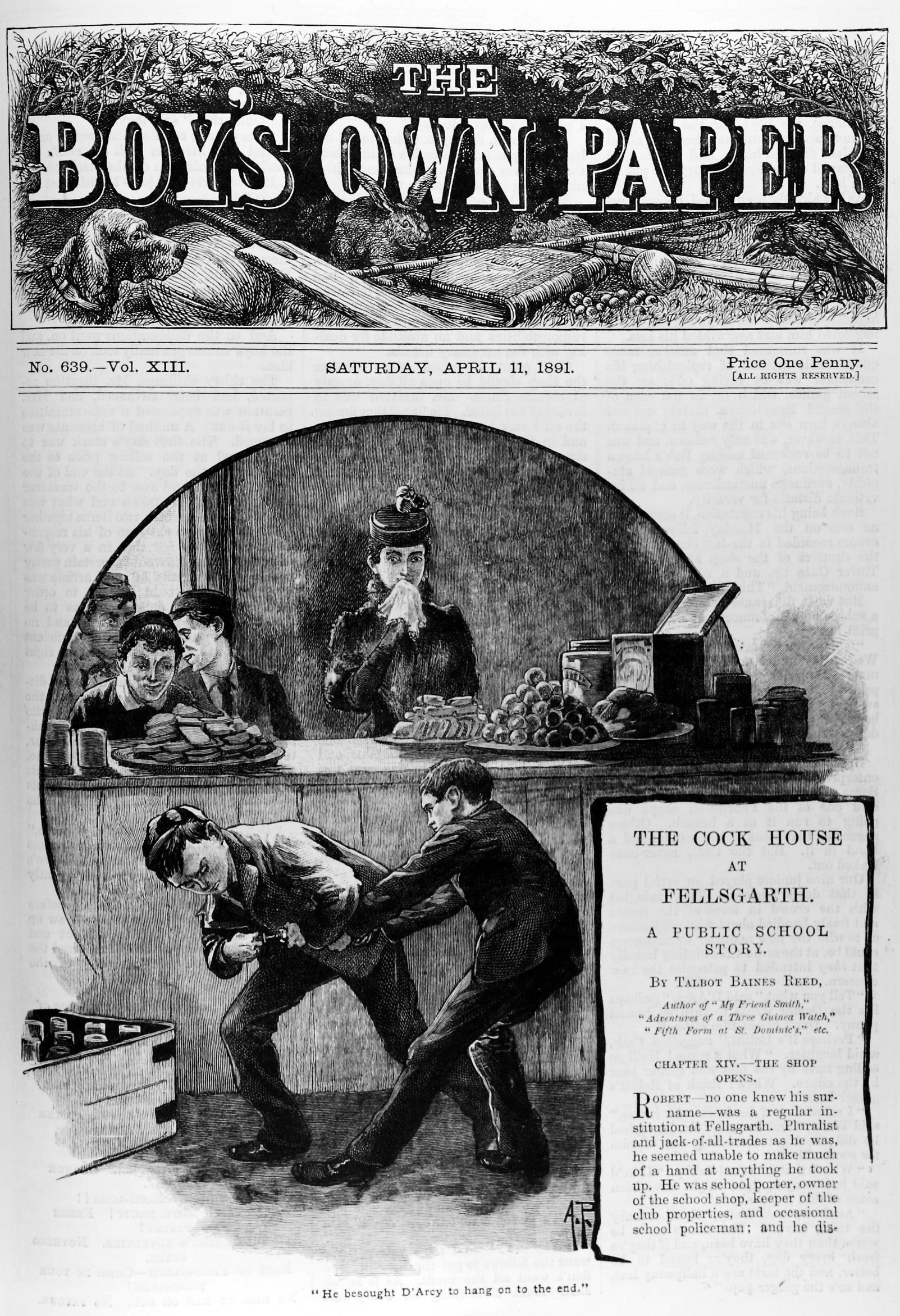|
Fun With Radio
''Fun with Radio'' is a book by Gilbert Davey first published in 1957 by Edmund Ward Ltd (London). At a time when radio receivers were still very expensive, and portable radios still a rarity (transistors were just being introduced), the book introduced many youngsters, mainly boys, to radio construction, and in some cases a career in radio or electronics. Radio construction was, in the early years of broadcasting, a very popular hobby among boys. By the time he published 'Fun with Radio', Davey already had a huge following among readers of the ''Boy's Own Paper ''The Boy's Own Paper'' was a British story paper aimed at young and teenage boys, published from 1879 to 1967. Publishing history The idea for the publication was first raised in 1878 by the Religious Tract Society, as a means to encourage you ...'', where he was said to be the most popular contributor on practical subjects among its readers, and in that same year he presented a series on BBC Television's ''Studio 'E ... [...More Info...] [...Related Items...] OR: [Wikipedia] [Google] [Baidu] |
Gilbert Davey
Gilbert Davey (7 June 1913 – 6 April 2011) was a British writer and radio enthusiast who introduced many youngsters to the rapidly developing fields of Radio and Electronics through his articles published in ''Boy's Own Paper'', and his books, in particular '' Fun with Radio'', first published in 1957, with updates ending in a sixth edition published in 1978. He also presented, beginning in September 1957, a six-part series on the BBC Television children's magazine programme called "Studio 'E'". Though an amateur in the field (his real job was as an insurance official), Davey earned freelance income in the years before World War 2 with articles for ''Practical Wireless'' and other radio journals. However, they did not make him well-known because many were published without attribution (a list among his papers claims authorship of around thirty articles including a 13-part series for Practical Wireless entitled "At the Short-Waver's Bench"). At the end of World War 2, Davey me ... [...More Info...] [...Related Items...] OR: [Wikipedia] [Google] [Baidu] |
Edmund Ward Ltd
William Heinemann Ltd., with the imprint Heinemann, was a London publisher founded in 1890 by William Heinemann. Their first published book, 1890's ''The Bondman'', was a huge success in the United Kingdom and launched the company. He was joined in 1893 by Sydney Pawling. Heinemann died in 1920 and Pawling sold the company to Doubleday, having worked with them in the past to publish their works in the United States. Pawling died in 1922 and new management took over. Doubleday sold his interest in 1933. Through the 1920s, the company was well known for publishing works by famous authors that had previously been published as serials. Among these were works by H. G. Wells, Rudyard Kipling, W. Somerset Maugham, George Moore (novelist), George Moore, Max Beerbohm, and Henry James, among others. This attracted new authors to publish their first editions with the company, including Graham Greene, Edward Upward, J.B. Priestley and Vita Sackville-West. Throughout, the company was also k ... [...More Info...] [...Related Items...] OR: [Wikipedia] [Google] [Baidu] |
Radio Receiver
In radio communications, a radio receiver, also known as a receiver, a wireless, or simply a radio, is an electronic device that receives radio waves and converts the information carried by them to a usable form. It is used with an antenna. The antenna intercepts radio waves (electromagnetic waves of radio frequency) and converts them to tiny alternating currents which are applied to the receiver, and the receiver extracts the desired information. The receiver uses electronic filters to separate the desired radio frequency signal from all the other signals picked up by the antenna, an electronic amplifier to increase the power of the signal for further processing, and finally recovers the desired information through demodulation. Radio receivers are essential components of all systems that use radio. The information produced by the receiver may be in the form of sound, video (television), or digital data. A radio receiver may be a separate piece of electronic equipment, or an ... [...More Info...] [...Related Items...] OR: [Wikipedia] [Google] [Baidu] |
Transistors
upright=1.4, gate (G), body (B), source (S) and drain (D) terminals. The gate is separated from the body by an insulating layer (pink). A transistor is a semiconductor device used to Electronic amplifier, amplify or electronic switch, switch electrical signals and electrical power, power. The transistor is one of the basic building blocks of modern electronics. It is composed of semiconductor material, usually with at least three terminals for connection to an electronic circuit. A voltage or current applied to one pair of the transistor's terminals controls the current through another pair of terminals. Because the controlled (output) power can be higher than the controlling (input) power, a transistor can amplify a signal. Some transistors are packaged individually, but many more are found embedded in integrated circuits. Austro-Hungarian physicist Julius Edgar Lilienfeld proposed the concept of a field-effect transistor in 1926, but it was not possible to actually construc ... [...More Info...] [...Related Items...] OR: [Wikipedia] [Google] [Baidu] |
Electronics
The field of electronics is a branch of physics and electrical engineering that deals with the emission, behaviour and effects of electrons using electronic devices. Electronics uses active devices to control electron flow by amplification and rectification, which distinguishes it from classical electrical engineering, which only uses passive effects such as resistance, capacitance and inductance to control electric current flow. Electronics has hugely influenced the development of modern society. The central driving force behind the entire electronics industry is the semiconductor industry sector, which has annual sales of over $481 billion as of 2018. The largest industry sector is e-commerce, which generated over $29 trillion in 2017. History and development Electronics has hugely influenced the development of modern society. The identification of the electron in 1897, along with the subsequent invention of the vacuum tube which could amplify and rectify small ... [...More Info...] [...Related Items...] OR: [Wikipedia] [Google] [Baidu] |
Boy's Own Paper
''The Boy's Own Paper'' was a British story paper aimed at young and teenage boys, published from 1879 to 1967. Publishing history The idea for the publication was first raised in 1878 by the Religious Tract Society, as a means to encourage younger children to read and to instill Christian morals during their formative years. The first issue was published on 18 January 1879. The final issue, a "Special Souvenir Edition, Price 2/-", was dated February 1967 and was published on 27 January 1967. It was a facsimile reprint of the first issue, complete with adverts. It had a panel on the front cover giving a very brief history and stating that it would "appear in future as the BOY'S OWN ANNUAL, edited by Jack Cox". The paper was published weekly in a cycle which followed the school year (Autumn through to Summer) until November 1913, when it became monthly. In total, 2511 issues of the paper were published. There was an extra Christmas Number (edition) of the magazine from 1884–85 ... [...More Info...] [...Related Items...] OR: [Wikipedia] [Google] [Baidu] |
1957 Children's Books
1957 ( MCMLVII) was a common year starting on Tuesday of the Gregorian calendar, the 1957th year of the Common Era (CE) and ''Anno Domini'' (AD) designations, the 957th year of the 2nd millennium, the 57th year of the 20th century, and the 8th year of the 1950s decade. Events January * January 1 – The Saarland joins West Germany. * January 3 – Hamilton Watch Company introduces the first electric watch. * January 5 – South African player Russell Endean becomes the first batsman to be dismissed for having ''handled the ball'', in Test cricket. * January 9 – British Prime Minister Anthony Eden resigns. * January 10 – Harold Macmillan becomes Prime Minister of the United Kingdom. * January 11 – The African Convention is founded in Dakar. * January 14 – Kripalu Maharaj is named fifth Jagadguru (world teacher), after giving seven days of speeches before 500 Hindu scholars. * January 15 – The film ''Throne of Blood'', Akira Kurosawa's reworking of ''Macbeth'', is rele ... [...More Info...] [...Related Items...] OR: [Wikipedia] [Google] [Baidu] |
Children's Non-fiction Books
A child ( : children) is a human being between the stages of birth and puberty, or between the developmental period of infancy and puberty. The legal definition of ''child'' generally refers to a minor, otherwise known as a person younger than the age of majority. Children generally have fewer rights and responsibilities than adults. They are classed as unable to make serious decisions. ''Child'' may also describe a relationship with a parent (such as sons and daughters of any age) or, metaphorically, an authority figure, or signify group membership in a clan, tribe, or religion; it can also signify being strongly affected by a specific time, place, or circumstance, as in "a child of nature" or "a child of the Sixties." Biological, legal and social definitions In the biological sciences, a child is usually defined as a person between birth and puberty, or between the developmental period of infancy and puberty. Legally, the term ''child'' may refer to anyone below the a ... [...More Info...] [...Related Items...] OR: [Wikipedia] [Google] [Baidu] |
Technical Books
Technical may refer to: * Technical (vehicle), an improvised fighting vehicle * Technical analysis, a discipline for forecasting the future direction of prices through the study of past market data * Technical drawing, showing how something is constructed or functions (also known as drafting) * Technical file, set of technical drawings * Technical death metal, a subgenre of death metal that focuses on complex rhythms, riffs, and song structures * Technical foul, an infraction of the rules in basketball usually concerning unsportsmanlike non-contact behavior * Technical rehearsal for a performance, often simply referred to as a technical * Technical support, a range of services providing assistance with technology products * Vocational education, often known as technical education * Legal technicality, an aspect of law See also * Lego Technic, a line of Lego toys * Tech (other) * Technicals (other) * Technics (other) * Technique (other) * Te ... [...More Info...] [...Related Items...] OR: [Wikipedia] [Google] [Baidu] |

.jpg)


